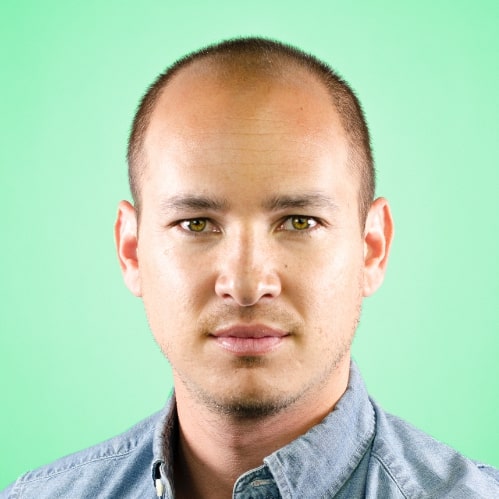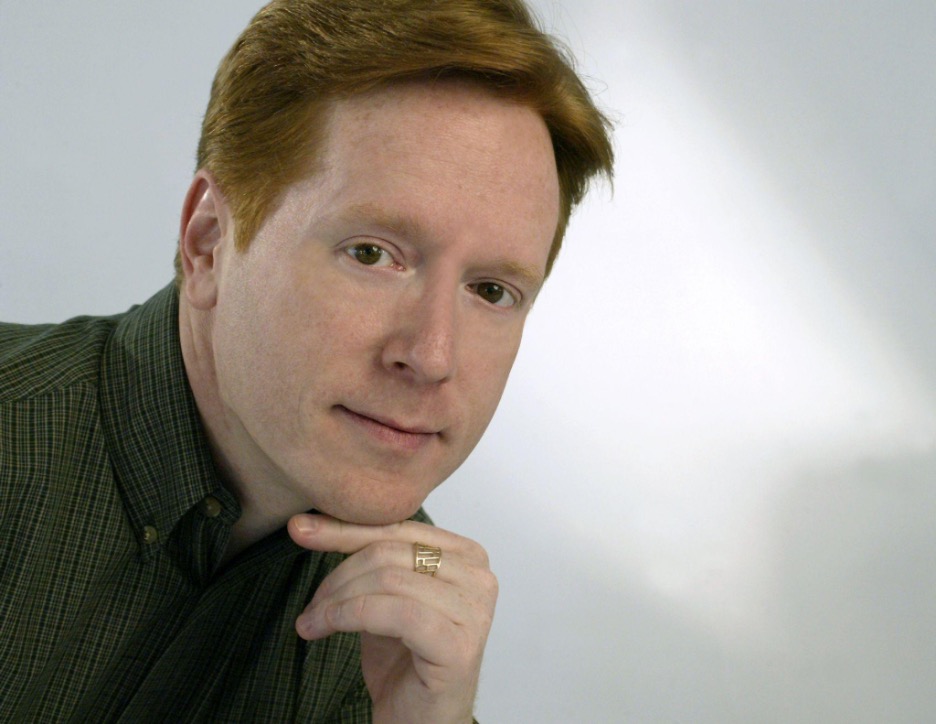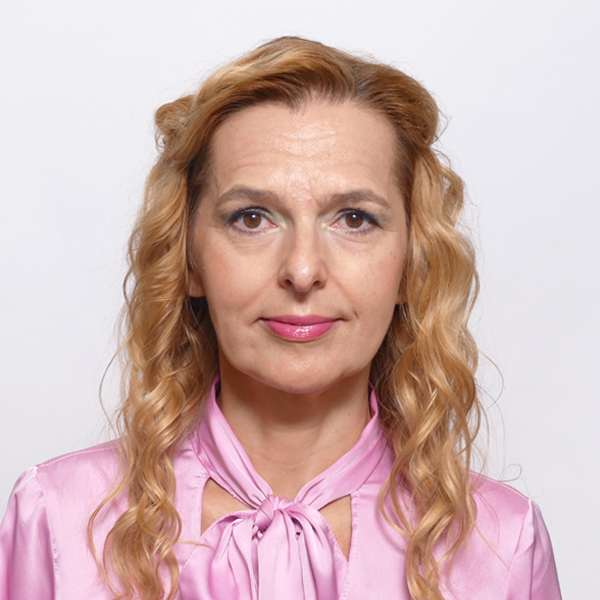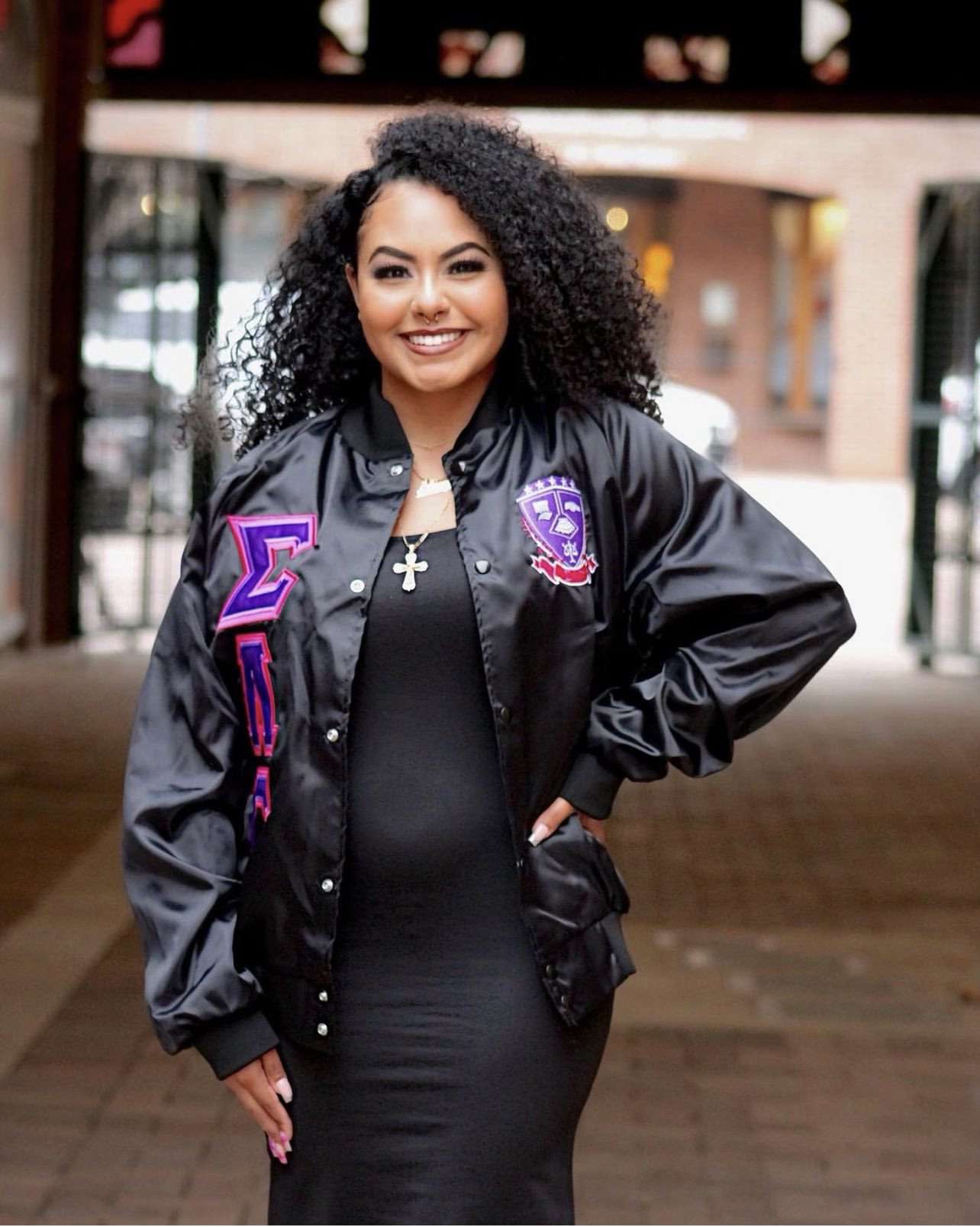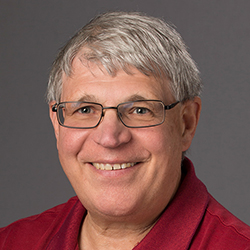
Robert Brunswig is an anthropologist and retired professor at UNC. Despite being retired he is dedicated to studying Dearfield and the people who resided there. He's worked with Professor George Junne and the Africana studies program for years and after a while Dearfield will be a National Historic Landmark. Dearfield is such a big piece of history that is only thirty minutes away from Greeley. (Running time 20:17)
Transcript:
My name is Robert Brunswig generally people call me Bob.
Welcome back to episode two about Dearfield and Robert Brunswick. In this episode, we discuss more about the people behind Dearfield and what has been in the works for becoming a National Historic Site.
We're now maybe a quarter the way along to have in Dearfield declared a National Historic Site. It's now under study, we had legislation that was signed by the President in December. That moves the process into the National Park Service who is doing a feasibility study of Dearfield as becoming part of the National Park Service, when they finish that they've just started that that'll take a couple of years, if they come out and say, yes, we want this as part of the National Park Service. And they've already made some statements to the effect that they're in favor of that, but they're not. That's, you know, that's not their final determination. Yet. When that determination takes place, they go back to Congress. Congress puts new legislation in to create this National Historic Site. And then that will probably take a year or two. So we're probably looking at maybe four or five years out altogether, with all of the different things that need to happen. When that happens. Dearfield can become a National Historic Site, and there are only about 180 of them in the country.
It will have some National Park Service funding, there will be a museum and a visitor center. We've been getting grants and say like crazy, but we've had a lot of we've had a bunch of grants raise in the in the last 10 years, in which we're restoring two of the buildings out there. And those will be the core of the National Historic Site, there'll be other parts of the site that will be interpreted for the public that will come in and to do walking tours of, of the different buildings that are no longer standing in many cases. But that we do an archaeology on so we've been able to interpret them. And that museum and visitors center will demonstrate the architecture of the time, the historic architecture, the building of the two buildings will be restored. One is a former filling station, and the other one used to be a small hotel, and then became the residence of the town founder when Dearfield kind of faded from the scene called Jackson house. Those are being restored to their 1920 condition. So people will be able to go in and walk through, you know, kind of almost a living museum. There'll be exhibits and things like that, there'll be education space, we already have school children coming out. And we've been giving them tours for a number of years, there'll be scholars from other parts of the country that will want to come in. And we have connections with a number of other historic black settlements across the country to so we're thinking maybe we'll tie all those together someday so that, that tourists can take this this path, this Byway, historic byway to visit a lot of these sites and you know, in the Midwest and the West.
So it's it's kind of all coming together and UNC, it's part of that mix. Of course, you know, Dr. Junne and myself are UNC professors. And we've been involved in that. Our archives department here, Jay Trask, who's the archivist has been been part of this from almost the very beginning. We have one of the best collections of Dearfield photographs, original photographs and documents, we're now getting artifact physical artifacts, tools, and all sorts of things that are being deposited in the museum here. Those will be used in part in the museum when it opens up. And UNC students have been involved doing archaeology, you know, doing, we're doing preservation where we bring in probably 60 or 70 or 80 volunteers during the year that come out and do either site cleanup or do some work on some of the buildings. They participate in the archaeology projects. We have an annual fall event that's been taking place since 2008. Since you know a long time now called Dearfield Day. And we do that usually in late September, early October. The last one we had had about 150 people show up. So it's been it's been very successful.
What is Dearfield Day?
Well, what we do is it's probably about a maybe four or five hour event. It's usually starts about mid morning and then goes till mid afternoon. We've had all sorts of things. We've had bands come out, we had Buffalo soldiers and their horses come out one time. We have tours of this site, we talk to people about what the plans are or things that we've done or are doing and those, you know, just people to participate plus we get a lot of the neighbors involved. So there are people that live around the side that, that have homes there that we're getting involved as much as we possibly can. And they're kind of the stewards of the site because we're not we can't be out there all the time.
This last year, we had a high school student who his his pain, his parents just live at the edge of the site. And he's been working with us. He did. He helped us with the archaeology and all sorts of things. And we've we've had some of the family members out there that live in that area have come out and done things. So that's been kind of cool.
The Geography Department here has been involved Dr. Dorner, who's now the Dean of Humanities and Social Sciences is an old research partner of mine. And he's been doing drone photography at the site for it's been about five or six years now. So there's a lot of involvement.
Our main academic Well, we have two main academic partners. One is the University of Nebraska at Lincoln, who have a black homesteaders program. And the head of that program recently retired and he's in Denver. So he's on this committee that oversees a lot of the work out there called the Dearfield committee. And then Colorado State. Colorado State has been involved with Dearfield since the 1980s, off and on. And they've been they did a lot of the early historic studies that, you know, the site in 1995 became a national register of historic places district based on on their research and their historic work. And we've been partners with Colorado State. UNC has been partners with them for a very long time. We're currently more affiliated with the College of Agricultural Sciences, which is kind of interesting.
Yeah that makes a lot of sense.
And we've been having since 2012 conferences every and these are open to the public. You know, in formal conferences, we have papers and panels and things like this on Dearfield. And this year, it's at Colorado State. It's going to be in the new atrium Hall, which is the brand new just opened up college of our agricultural sciences building. It's it's absolutely gorgeous. It's beautiful. And so we'll have we'll be having our conference May 20th there. But we're kind of warping back a little bit on the Colorado State and go because fairly recently, we found out that Colorado State Extension services agricultural extension services were active in the town of Dearfield, in the colony of Dearfield, back in the 1920s. Well, what they were doing is they were helping the Dearfield farmers and giving them in all kinds of professional advice about how to grow certain types of crops, how to care for their animals, the vet school. Well, there wasn't a vet school at that time, but they were doing veterinary science at the Agricultural College. And so they were tied in to Dearfield, to and so we're kind of going back in and kind of reconnecting that connection with Dearfield of Colorado State. And what's what's fascinating is we found out that the College of Agricultural Sciences at CSU has a archival department. And I'll think of colleges here having their own archival department. And they've got records going back to the very beginning of ag extension services at CSU. That's amazing. So we've got those original records now to kind of bring into the into the mix.
That's got to help a lot.
Yeah. And then we work with the Greeley museums here. We've got to really museums, I've got the manager of the museums and the chief curator are part of our Dearfield committee. We've got connections with a lot of other organizations in the state outside the state, it's kind of grown into a bit of a monster in one sense, is that we have so many super talented people and organizations and students and academic institutions engaged in this. And it's a real challenge to be able to coordinate everything. And of course, the core of all of this as the black American West Museum in Denver, which owns the property. They were the ones that began to acquire the property back in the 1980s and 1990s. And tried to preserve Dearfield at that point in time. And it's you know, it's been a long road to be able to come to the point where we are today. A lot of that effort has been taken by the Dearfield Committee, which is a Citizens Committee here in Greeley. Who are who advise the black American West museum who owns the actual site, the town site, and we have a wonderful working relationship with the People's museum with a board as some of our committee have been on the board from time to time and worked with them. And it's the black American West museum, who will be part of a partnership with the National Park Service when it becomes a National Historic Site.
So it's kind of hybrid thing, where you have a private owner who is has a special partnership arrangement with the National Park Service, a federal agency, and our committee will probably change into some kind of an organization where I will, will be sort of a guiding, you know, board or group that will do a lot of the programming and right and fundraising and everything like this for it. So you get all these bits are different pieces together. And then with UNC bringing students in with students getting research opportunities, and study opportunities, there are a lot of different pieces of this a lot of facets that will really kind of make this amazing resource, which is only a half hour from Greeley, you know, it brings into focus a lot of the diversity, not only, you know, the state, but the nation.
And like the community at that time.
The community at that time and the community at this time. We need lessons like that, because we need to be reminded that, you know, where people were sometimes repeating things that aren't so good, that were that took place in the past, you know, very similar types of things. And people need to understand that we all want a better life. And we all want to live together. And that's that's kind of part of the lesson. And we've already had projects in the history department that have taken teachers. And teachers are creating curriculum for this for schools in Colorado. And Dearfield is kind of part of that part of that lesson.
That's amazing. And like, I didn't know that there was so much like involved in it. But it's super interesting to hear about.
Yeah, it's incredibly involved. And one of my things that I've done all my life, I just kind of came out of a generation that did what we call cultural landscapes, which means that we look at the historic record or the archaeological record as not pieces of things. We don't just study a narrow area of focus. We don't study arrowheads, for instance, and we don't look at American Native American cultures. We study everything as much as we can that are the whole picture. And that's how we're approaching Dearfield. It's different disciplines and different experts and different sources of information all being brought together in a systematic way to better understand the past and better use that past to teach us about our lives in the present and the future.
That's super interesting. And I didn't know that CSU was involved or anything like that. That's awesome. It makes sense. They mean, they were founded as an agricultural sort of school.
Yeah, it all fits. The founder of Dearfield wrote a couple of things. I mean, he left a lot of writing behind. And one of the things he wrote is he had he had these incredible aspirations that were not possible in most cases. But he wanted a branch of he wanted a small agricultural college out there at Dearfield. You know, he wanted these industrial plants and things like this. They're just all kinds of stories, not just personal story. There are ton of personal stories.
Because people who came to Dearfield didn't just come from Colorado, they didn't come from five points in Denver, but they came from all over the country. They came from the Caribbean, they came from, they came from Mexico, they came from the east coast all over the place there. I think there were almost 30 states that were represented. And people were looking for opportunities, you know, having come out of the Civil War and the Jim Crow South and there were a lot of movements over the previous 30 plus years 40 plus years before Dearfield of people coming to Colorado and moving north or moving west. And it's that we used to call a diaspora you know, the my out migration from of certain parts of the south into the north, looking for better lives.
And Dearfield was a very late piece of that. But a very important piece. There were a lot of very prominent people involved with Dearfield after OT Jackson began to put it together and began to try to recruit people out there. There were there were physicians, there were lawyers, there were prominent people nationally that, you know, were involved with Dearfield, one of the things that we've been doing is looking at black newspapers all over the country. And you'd be surprised how often, you know, there were, just little articles about, you know, the success at Dearfield. And you know, what they were trying to do and things like this. So it was a phenomenon that was national in terms of the African American community of the day.
I think it's a really important lesson, especially seeing all that's happening just in general.
Oh, yes.
I think you answered all my questions.
Good. Did we kind of weave or wait?
I think is really good. Like I was like saying they're like, oh, but that was checked off. And that that really helps me.
So I guess I have one last question for you. And it is, if you had a podcast, what would you do it on?
If I had a podcast? Okay. This is something that you might want to think about.
Okay.
Okay. So we've covered a lot of topics in the Dearfield conference. Over the years, we've done presentations about certain aspects of the history. This year, we're beginning to go more towards themes. And this year, what we're doing is celebrating women, and families in Dearfield. And part of that is genealogical, because what you're doing is you're looking at, you know, how families were put together and where people came from and what their background was. And if I had, if I did a podcast, what I would do is begin to focus in on the individual stories of the people, and particularly the females.
The reason I would focus on the females a lot is that this is a western expansion phenomenon, historically, is that in very, very many cases, when people became out and homesteaded, they created farms and in remote areas in the West, is that the women were often at least part of the year left holding down the farms and the ranches. And the men, in many cases had to go off and work somewhere that work on the railroads, and they had to work in town or they had to do something to raise some cash. Because you know, farming and ranching wasn't necessarily going to give you a living every single year.
It's very up and down.
And so it was the mothers and the wives. They were the glue that held these families and communities to get and, and that's what we're doing this year at the conference in a small way. But I would focus podcast on those stories, because I think they're pretty important. And the fact is that this was this was over 100 years ago. And I don't know that women will recognize most of the time. Yeah, for how incredibly important they were for the survival of those communities.
And you want to look at all of the individual people that were there because overall story is such a great story. But it was the people that made the story as well.
So I’d drilled down on the people.
I'd love to hear more untold stories about the people who lived in Dearfield and a History podcast dedicated to those stories would not only show the community of the time, but also how significant Dearfield was for the residents. Thank you for listening to Robert Brunswig talk more about the history of Dearfield and the process of studying it and making it a National Historic Site. I'm your host Isabella Marcus-Porter, giving you a taste of UNC.

